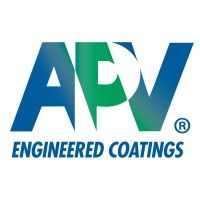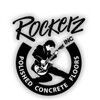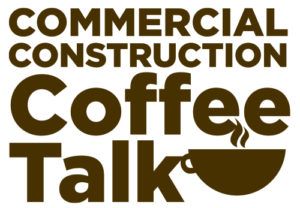Did you know that uneven surfaces cause over 1 million trips and falls annually in the U.S.? These hazards often stem from sunken or cracked areas that can be easily fixed with concrete leveling. This process is a cost-effective alternative to full replacement, saving homeowners time and money.
Common issues like trip hazards, poor drainage, and unsightly cracks can be resolved through this method. Whether it’s a driveway, sidewalk, or pool deck, lifting concrete restores functionality and improves safety. A-1 Concrete Leveling, with over 30 years of experience, specializes in these repairs.
This article will explore the methods, cost comparisons, and maintenance tips to help you decide if concrete lifting is the right solution for your property. Stay tuned to learn how this repair technique can transform your outdoor spaces.
Introduction to Concrete Lifting
Sunken or uneven surfaces can be a major headache for property owners. Fortunately, there’s a cost-effective solution that doesn’t involve tearing everything out. This process, known as concrete leveling, uses a hydraulic injection method to raise and stabilize sunken slabs. It’s a quick and efficient way to restore surfaces without the mess of demolition.
What is Concrete Leveling?
Concrete leveling is a repair method that involves injecting materials like polyurethane foam or limestone slurry beneath sunken slabs. These materials expand, lifting the slabs back to their original position. This technique is ideal for fixing uneven driveways, sidewalks, and pool decks. It’s a non-invasive approach that saves time and money compared to full replacement.
Why is Concrete Leveling Important?
Uneven surfaces are more than just an eyesore. They can create trip hazards, leading to potential injuries and liability risks. By addressing these issues, property owners can improve safety and prevent accidents. Additionally, this method reduces waste, aligning with EPA guidelines for sustainable practices. It’s a practical solution for both residential and commercial properties, ensuring long-lasting results.
Common Problems Addressed by Concrete Lifting
Uneven surfaces can lead to costly repairs and safety risks. From trip hazards to poor drainage, these issues can disrupt daily life and even pose liability concerns. Addressing them promptly ensures safer, more functional outdoor spaces.
Uneven Sidewalks and Driveways
Sidewalks and driveways often settle over time, creating uneven surfaces. Even a 1/4″ elevation change can become a trip hazard, especially for those with mobility challenges. ADA compliance requires surfaces to be level, making repairs essential for public safety.
Trip Hazards and Safety Concerns
Uneven slabs are a leading cause of accidents, resulting in over 1 million trips and falls annually in the U.S. Insurance claims related to these incidents highlight the importance of addressing such hazards. Repairing these areas reduces liability and improves safety.
Water Drainage Issues
Water pooling caused by uneven surfaces can lead to foundation erosion and ice formation in colder climates. Proper leveling ensures water flows away from structures, preventing long-term damage. This is especially critical for driveways and sidewalks near homes.
How Concrete Lifting Works
Restoring uneven surfaces doesn’t have to be complicated or expensive. The process involves a few key steps that ensure efficiency and safety. Professionals use advanced techniques to bring sunken slabs back to their original position, saving time and money.
The Basic Process of Concrete Lifting
The first step is drilling small holes into the affected area. These holes are strategically placed in either a spiral or grid pattern, depending on the surface. This ensures even distribution of the lifting material.
Next, a specialized mixture, such as polyurethane foam or slurry, is injected under pressure. This material expands, filling voids and raising the slab. Pressure is carefully monitored to avoid over-lifting or cracking.
Finally, the holes are patched, leaving the surface smooth and level. The entire process is quick, often completed in a single day.
Materials Used in Concrete Lifting
Different materials are chosen based on the project’s needs. Polyurethane foam is lightweight and cures in about 30 minutes, making it ideal for quick repairs. On the other hand, slurry is heavier and takes up to 24 hours to fully set but provides excellent stability.
Safety is a top priority. Professionals follow OSHA guidelines to ensure a secure work environment. This includes wearing protective gear and using proper equipment during the process.
Types of Concrete Lifting Methods
When it comes to fixing uneven surfaces, there’s more than one way to get the job done. Each method has its own advantages, depending on the situation. Below, we’ll explore three popular techniques: stone slurry grout, polyurethane foam, and mudjacking. Understanding these options can help you make an informed decision for your property.
Stone Slurry Grout Concrete Lifting
Stone slurry grout is a traditional method that uses a mixture of water, cement, and soil. This slurry is injected beneath sunken slabs to lift them back into place. It’s known for its durability and strength, making it ideal for heavy-duty applications like driveways and industrial areas.
One of the key benefits of this method is its cost-effectiveness. It’s often less expensive than other techniques, especially for larger projects. However, it takes longer to cure, which can be a drawback for time-sensitive repairs.
Polyurethane Foam Concrete Lifting
Polyurethane foam is a modern alternative that’s gaining popularity. This lightweight material is injected under pressure, expanding to fill voids and lift slabs. It cures quickly, often in just 30 minutes, making it a great choice for urgent repairs.
Another advantage is its minimal environmental impact. Polyurethane foam produces fewer CO2 emissions compared to traditional methods. It’s also highly durable and resistant to water, ensuring long-lasting results.
Mudjacking
Mudjacking, a technique dating back to the 1930s, uses a mixture of soil, water, and cement to raise sunken surfaces. Originally developed for agricultural use, it’s now widely used for residential and commercial repairs.
This method is known for its load-bearing capacity, making it suitable for heavy surfaces like driveways and sidewalks. However, it’s less popular in regions with extreme weather due to its susceptibility to erosion.
Each of these concrete lifting methods has its own strengths and weaknesses. By understanding their unique features, you can choose the best option for your specific needs.
Stone Slurry Grout Concrete Lifting
Stone slurry grout is a reliable method for addressing sunken surfaces, offering durability and strength. This technique uses a mixture of limestone, water, and cement to create a stable base. It’s a cost-effective solution for heavy-duty applications like driveways and industrial areas.
Lifting Compound
The material used in this method is a blend of limestone and Portland cement. The cement is added in ratios of 5-15%, ensuring the mixture is strong yet workable. This combination provides excellent resistance to freeze-thaw cycles, making it ideal for colder climates.
Pump pressure is another critical factor. Typically, it ranges between 200-300 psi, ensuring the slurry fills voids evenly. This process creates a stable foundation, with repairs lasting between 7-15 years.
Drill Hole Size
Professionals drill holes of about 1″ in diameter to inject the slurry. These holes are strategically placed to ensure even distribution of the material. The process is efficient, often completed in a single day, with minimal disruption to the surrounding area.
Polyurethane Foam Concrete Lifting
Polyurethane foam has become a game-changer in repairing uneven surfaces. This modern method uses advanced materials to restore stability and safety. It’s a quick, efficient, and environmentally friendly solution for various applications.
Lifting Compound
Polyurethane foam is created through a two-part polymer reaction. When mixed, it expands up to 30 times its original size, filling voids and lifting the slab evenly. This material is lightweight yet strong, with a lifting capacity of 6,000 lbs/sq ft.
Temperature plays a key role in the process. The ideal range is between 40-90°F for optimal performance. Additionally, polyurethane foam is fire-resistant and often carries UL certifications, ensuring safety in various environments.
Drill Hole Size
Professionals drill small holes, typically 5/8″ in diameter, to inject the foam. These holes are strategically placed to ensure even distribution and precise lifting. The process is minimally invasive, leaving the surrounding area intact.
One notable application of this method is in airport runway repairs. High-density foam was used to stabilize runways, ensuring safety and efficiency for air traffic. This case study highlights the versatility and reliability of polyurethane foam in demanding environments.
Mudjacking
Mudjacking has been a trusted method for decades to address sunken surfaces. This technique involves injecting a mixture of soil, sand, and cement beneath the slab to raise it back to its original position. It’s a cost-effective solution for uneven driveways, sidewalks, and other heavy-duty applications.
Traditional mudjacking uses a slurry mixture, while modern techniques have improved efficiency and durability. Pump pressure typically ranges between 400-600 psi, ensuring the mixture fills voids evenly. Regional variations, such as clay content, can affect the material’s performance.
Lifting Compound
The lifting compound in mudjacking is a blend of sand, cement, and soil. This mixture is designed to provide stability and strength. The density of the material ranges from 100-120 lbs/cu ft, making it suitable for heavy surfaces.
Permeability testing shows that this method is less effective in areas with high water exposure. However, it remains a popular choice for its durability and affordability.
Drill Hole Size
Professionals drill 2″ holes to inject the mixture. These holes are strategically placed to ensure even distribution and precise lifting. The process is efficient, often completed in a single day, with minimal disruption to the surrounding area.
Mudjacking continues to be a reliable option for property owners seeking a durable and cost-effective repair method. Its ability to handle heavy loads makes it ideal for driveways and sidewalks.
Cost of Concrete Lifting
Understanding the cost of repairs can help property owners make informed decisions. The price of fixing uneven surfaces depends on several factors, including labor, materials, and the size of the affected area. By breaking down these elements, homeowners can budget effectively and choose the best solution for their needs.
Factors Influencing Cost
Several factors affect the overall expense of repairs. Labor typically accounts for 40-60% of the total cost, while materials make up the remaining portion. The size and condition of the surface also play a role. Larger areas or those with significant damage may require more resources.
Seasonal demand can influence prices as well. For example, repairs during peak months (spring and summer) may cost more due to higher demand. Additionally, regional variations, such as the USDA cost-of-living index, can impact expenses. Urban areas often have higher rates compared to rural locations.
Price Ranges for Different Services
The cost of repairs varies depending on the service type. Below is a breakdown of average prices for common projects:
Warranty options also affect the total price. A 5-year warranty may add 10-15% to the cost, while a 10-year warranty could increase it by 20-25%. Investing in a longer warranty ensures peace of mind and long-term protection.
“Repairing uneven surfaces is an investment in safety and property value. Understanding the cost breakdown helps homeowners make smart financial decisions.”
For example, a 1,200 sq ft driveway repair might cost $1,200 with a 5-year warranty or $1,500 with a 10-year warranty. Comparing these options allows property owners to choose the best fit for their budget and needs.
Benefits of Concrete Lifting
Fixing uneven surfaces offers more than just safety—it’s a smart investment. Concrete lifting repair method provides significant advantages, from financial savings to environmental benefits. Whether it’s a driveway, sidewalk, or pool deck, the right solution can transform your property while minimizing hassle.
Cost Savings Compared to Replacement
One of the biggest advantages is the cost savings. Studies show that repairs can save up to 70% compared to full replacement. This makes it a budget-friendly option for homeowners and businesses alike. Additionally, the process reduces waste, aligning with EPA guidelines for sustainable practices.
For example, a 1,200 sq ft driveway repair might cost $1,200, while a full replacement could exceed $4,000. This significant difference allows property owners to allocate funds to other priorities. Warranty options further enhance the value, ensuring long-term protection.
Time Efficiency
Another key benefit is time efficiency. Unlike replacement, which can take days or weeks, repairs are often completed in a single day. This minimizes disruptions to daily routines or business operations. For commercial properties, this means less downtime and faster returns to normal activities.
Quick turnaround times are especially valuable for urgent repairs. For instance, polyurethane foam cures in about 30 minutes, making it ideal for time-sensitive projects. This efficiency ensures that surfaces are safe and functional without unnecessary delays.
Minimal Disruption
Repairing uneven surfaces is designed to be minimally invasive. Small holes are drilled to inject the lifting material, leaving the surrounding area intact. This approach preserves landscaping and reduces noise pollution, making it a neighbor-friendly solution.
Permit requirements are also simpler compared to full replacement. Many municipalities classify repairs as maintenance, reducing paperwork and approval times. This streamlined process ensures that projects move forward without unnecessary hurdles.
“Choosing the right repair method is an investment in safety, functionality, and long-term value.”
From cost savings to environmental benefits, this repair method offers a practical solution for property owners. By addressing uneven surfaces promptly, you can enhance safety, improve curb appeal, and protect your investment.
When to Consider Concrete Lifting
Identifying the right time to address sunken surfaces is crucial for property maintenance. Uneven areas can lead to safety hazards, poor drainage, and structural issues. Recognizing the signs early can save time and money while preventing further damage.
Signs You Need Concrete Lifting
Visible cracks in driveways or sidewalks are a clear indicator that repairs are needed. These cracks often result from shifting soil or voids beneath the surface. Another sign is uneven slabs that create trip hazards or pooling water.
Ground-penetrating radar assessments can help identify hidden voids or instability. This technology provides a detailed view of the subsurface, ensuring accurate diagnosis. Measurement thresholds, such as a settlement of more than 1″, are also a reliable indicator.
Ideal Conditions for Concrete Lifting
The best time for repairs is during dry seasons when the soil is stable. Wet conditions can complicate the process, making it harder to achieve lasting results. A soil composition analysis is often recommended to determine the right approach.
Insurance coverage may also play a role in deciding when to proceed. Some policies cover repairs for safety-related issues, reducing out-of-pocket expenses. By addressing these factors, property owners can ensure a smooth and effective repair process.
When Not to Use Concrete Lifting
Not all surface issues can be resolved with a quick fix. While repairs are often a cost-effective solution, there are situations where a full replacement is the better choice. Understanding these scenarios can save time, money, and prevent future problems.
Scenarios Where Replacement is Better
In cases of severe damage, such as crumbling slabs or extensive cracks, repairs may not provide lasting results. A structural engineering assessment can help determine if the surface is beyond repair. Additionally, if the soil beneath the slab is unstable or contains organic material, repairs may fail over time.
Frost heave susceptibility is another factor. In colder climates, repeated freezing and thawing can cause surfaces to shift, making repairs ineffective. Municipal codes may also require replacement for certain projects, especially if the surface no longer meets safety standards.
Limitations of Concrete Lifting
Concrete lifting methods have their limitations. For example, surfaces with extensive cracks or poor drainage may not respond well to repairs. Reinforcement requirements, such as steel mesh, may be necessary for severely damaged slabs, adding to the cost and complexity.
In one case study, a repair attempt failed due to high organic content in the soil. The organic material decomposed over time, causing the surface to sink again. This highlights the importance of evaluating subsurface conditions before proceeding with repairs.
Maintenance After Concrete Lifting
Proper care ensures long-lasting results after repairs. Once surfaces are restored, a little maintenance can prevent future issues and extend their lifespan. This section covers essential tips to keep your property safe and functional.
How to Maintain Lifted Concrete
After repairs, allow at least 24 hours for the material to cure fully. During this time, avoid heavy loads or excessive water exposure. Once cured, inspect the surface for any cracks or uneven areas. Sealing these cracks promptly prevents moisture from seeping in and causing further damage.
Here are some key steps to follow:
- Clean the surface regularly to remove debris and dirt.
- Apply joint sealing products to protect against water infiltration.
- Monitor the area for signs of settling or new cracks.
Preventing Future Settlement
To avoid future issues, address the underlying causes of settlement. Poor soil conditions or inadequate drainage are common culprits. Improving drainage around the area ensures water flows away from the surface, reducing the risk of erosion or voids.
Consider these additional tips:
- Install gutters or downspouts to redirect water.
- Use load distribution techniques to minimize pressure on the surface.
- Schedule regular inspections to catch potential problems early.
By following these guidelines, you can maintain the integrity of your surfaces and prevent costly repairs down the line.
Choosing the Right Concrete Lifting Method
Selecting the best repair technique depends on several key factors. Each method has its own strengths, making it essential to evaluate your project’s specific needs. From cost to durability, understanding the options ensures a tailored solution for your property.
Comparing Stone Slurry, Foam, and Mudjacking
Stone slurry grout is ideal for heavy-duty applications, offering durability and strength. It’s a budget-friendly option but takes longer to cure. Polyurethane foam, on the other hand, is lightweight and cures quickly, making it perfect for urgent repairs. Mudjacking is a traditional method known for its load-bearing capacity but may not perform well in extreme weather.
Here’s a quick comparison:
- Stone Slurry: Best for driveways and industrial areas.
- Polyurethane Foam: Ideal for quick, eco-friendly repairs.
- Mudjacking: Suitable for heavy surfaces like sidewalks.
Factors to Consider When Choosing a Method
Several factors influence the decision, including the size of the area and the type of material used. Climate plays a role too, as some methods perform better in specific weather conditions. Additionally, consider the load requirements—heavy vehicles may need a more robust solution.
By evaluating these factors, you can choose the method that best suits your project’s needs and ensures long-lasting results.
Conclusion
Choosing the right solution for uneven surfaces ensures safety and long-term value. When deciding on a repair method, consider factors like cost, time, and the specific needs of your property. A-1’s national franchise network offers expertise and reliability, making them a trusted choice for homeowners and businesses alike.
For a tailored solution, request a free onsite estimate. Their team will assess your situation and recommend the best approach. Once the work is complete, regular maintenance can extend the lifespan of your surfaces and prevent future issues.
Remember, addressing trip hazards promptly not only improves safety but also protects your investment. With the right care, your property will remain functional and attractive for years to come.
FAQ
What is concrete leveling?
Concrete leveling is a process used to raise and stabilize sunken or uneven slabs. It involves injecting materials like polyurethane foam or stone slurry beneath the surface to restore its position and functionality.
When should I consider concrete lifting?
You should consider this method when you notice uneven surfaces, trip hazards, or water pooling on sidewalks, driveways, or patios. It’s a cost-effective alternative to full replacement.
How does polyurethane foam lifting work?
Polyurethane foam lifting involves drilling small holes into the slab and injecting expanding foam. The foam fills voids, lifts the slab, and hardens quickly, providing a durable solution.
What are the benefits of mudjacking?
Mudjacking uses a limestone slurry to lift slabs. It’s an affordable option that works well for larger areas and provides long-lasting results when done correctly.
How much does concrete leveling cost?
Costs vary based on factors like the size of the area, the method used, and the extent of the damage. On average, prices range from $3 to $10 per square foot.
Can concrete lifting fix cracks?
While it can address uneven surfaces, cracks may require additional repair. Small cracks can be sealed, but larger ones might need more extensive work.
How long does the process take?
Most projects are completed in a few hours, and the area is ready for use shortly after. Polyurethane foam, for example, cures in minutes.
Is concrete lifting better than replacement?
In many cases, yes. It’s faster, more affordable, and causes less disruption. However, severely damaged slabs may still need replacement.
How do I maintain lifted concrete?
Regular inspections, sealing cracks, and ensuring proper drainage can help maintain the slab’s condition and prevent future settling.
What factors should I consider when choosing a method?
Consider the size of the area, the severity of the damage, and your budget. Consulting a professional can help determine the best approach for your needs.


























